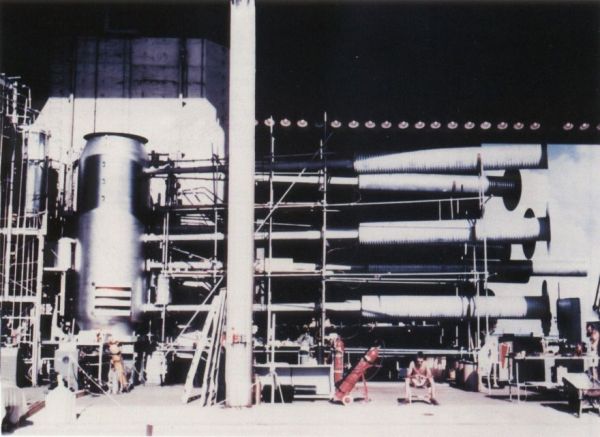
After World War II, the US continued its research into nuclear weapons and developed a bomb named Mike. That was the nickname of the first hydrogen bomb, and it was too big to ever drop from above. In fact, Ivy (for Operation Ivy) Mike (for megaton) weighed 74 metric tons, used a 20-foot tower, and required a cryogenics facility and a power plant for its liquid deuterium fuel. Why build a bomb that big? To see if it could be done.
Ivy Mike was detonated on November 1, 1952, on an island named Elugelab, which was part of the unpopulated Eniwetok Atoll in the Marshall Islands. I used the word "was" because Elugelab ceased to exist on that day, and became a crater in the ocean floor. The rest of the atoll was stripped of all its vegetation. The ten-megaton explosion created a fireball five kilometers wide, and a mushroom cloud 33 kilometers high.
Ivy Mike explodes in a clip from the documentary Trinity and Beyond.
Mike's detonation left the entire atoll contaminated. Despite decades of decontamination efforts, it will still be a few years before Eniwetok Atoll is safe for humans. Read the story of Operation Ivy and the first hydrogen bomb at Amusing Planet.
(Image credit: United States Department of Energy)





